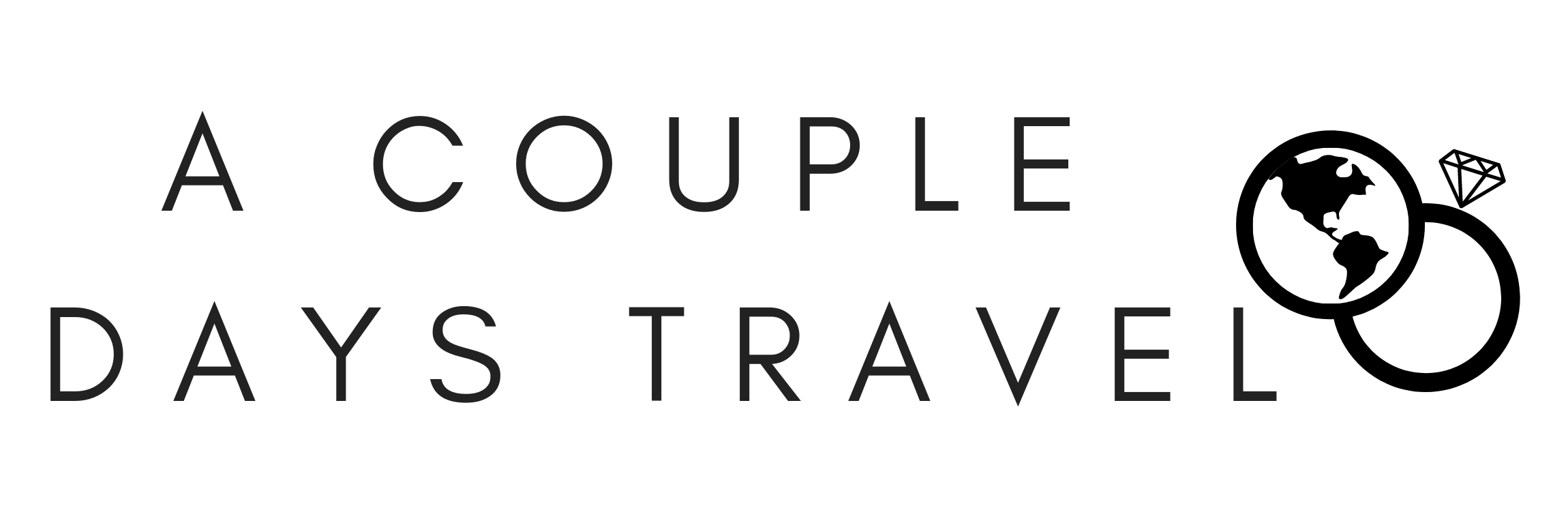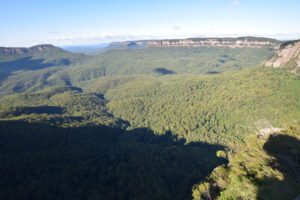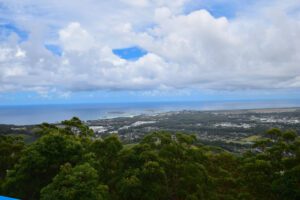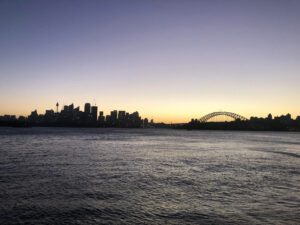Scuba diving on the Great Barrier Reef is a top dive experience on many people’s bucket lists. The Great Barrier Reef is the worlds largest coral reef system that stretches along the Queensland coast of Australia. Experiencing this underwater world was #1 on our bucket list and after acquiring diving skills in the States, we headed to Cairns Australia to experiencing diving the great barrier reef for the first time.
The Great Barrier Reef is so large it can be seen from space! It covers an area of over 133,000 square miles. The Great Barrier Reef gets lots of attention as it is a UNESCO World Heritage Site and is listed by many as one of the natural wonders of the world. No wonder it tops so many bucket lists around the world. The reef is home to a variety of animal life including sharks, turtles, fish, sea snakes, crustaceans, bioluminescent algae and of course, coral.

Stuff In This Post
ToggleTips for Diving the Great Barrier Reef
- Do an overnight diving trip or a “liveaboard”. I cannot stress enough how highly I suggest diving the great barrier reef multiple times over the course of two or more days. As you’ll see from our dive itinerary the sunrise and nighttime dives were our most memorable dives and only available to people staying overnight on a boat.
- Get scuba certified before coming to the Great Barrier Reef. Many companies offer certification on the reef. However, we think that getting through the stress of certification and feeling comfortable as a diver before coming to the reef is important. That way, once you’re on the reef, you can relax and enjoy the dive.
- If you are not going to dive, make sure you book a trip that is specific for snorkeling. There are different dive sites on the Great Barrier Reef and some of them are shallow enough that you will be able to see everything while snorkeling, while some sites have deeper reefs. Going snorkeling on a snorkel specific tour will ensure that you wind up at a good site for snorkeling.
- Diving is physically exhausting. So make sure you stock up on water and food before and after each dive. And avoid alcohol before any diving.
- Don’t touch the wildlife, including the coral! (and yes we are touching reef in the photos below – that’s why this knowledge is power) The reef is shrinking, don’t ruin what is left of it.
- Most diving companies provide all of the equipment you will need, including underwater cameras. If you have prescription goggles or other equipment specific to your needs, you should pack those items.
- Be aware that diving the Great Barrier Reef requires a permit. Most companies will include this in the tour price but check before you leave or be prepared to pay extra.
- Many travel insurances do not include diving on their list of covered activities. Check the travel insurance you purchase for this coverage or go with an adventure travel insurance company.
- Bring motion sickness medicine with you and take it before getting on your boat. Even people with hearty sea-legs may get motion sickness while diving or while traveling to and from the dive site. Spend $10 on some non-drowsy medication and avoid ruining your diving trip. For other things to pack, check out our packing guide for liveaboard diving.
- Know what to expect before you leave for each dive. Ask your crew what to look out for, what you’ll see and where to explore. Your crew is wise and getting this wisdom before you enter the water will help you stay calm during your dive and get the most out of your experience.
- When booking this trip, you should also know that you can’t fly the day after diving, so make sure you give yourself one extra day in Cairns after your dive.
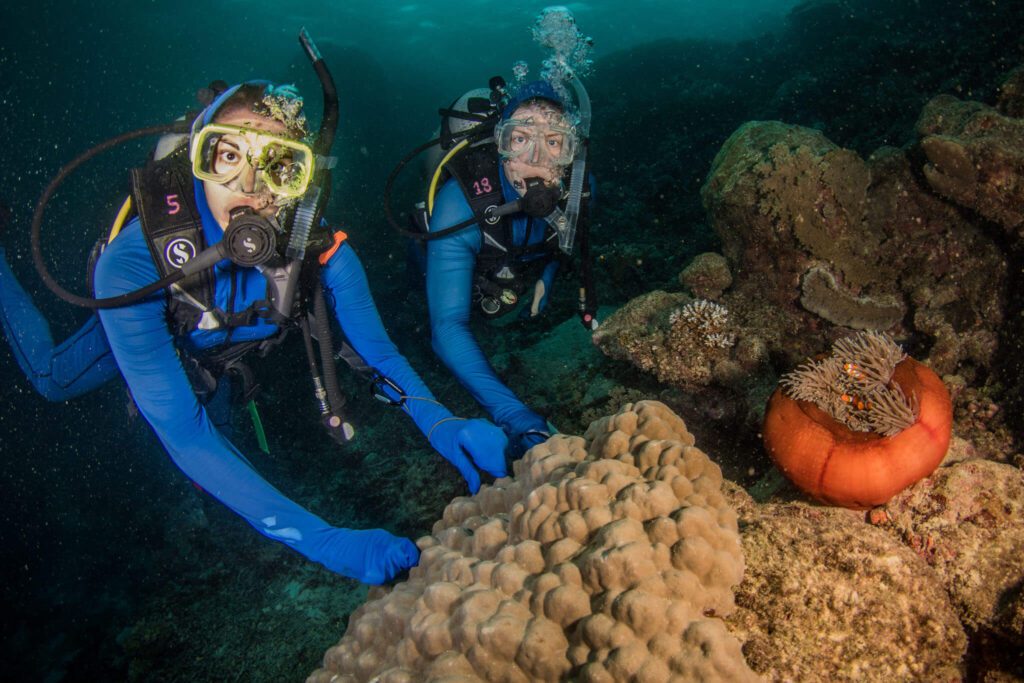
The Dive Itinerary
For our Great Barrier Reef dive, we booked a two day livaboard dive with Reef Encounters based out of Cairns. We stayed in Cairns and dove on days 2 and 3 of our Cairns itinerary. This gave us time to relax and acclimate to the altitude before and after each flight.
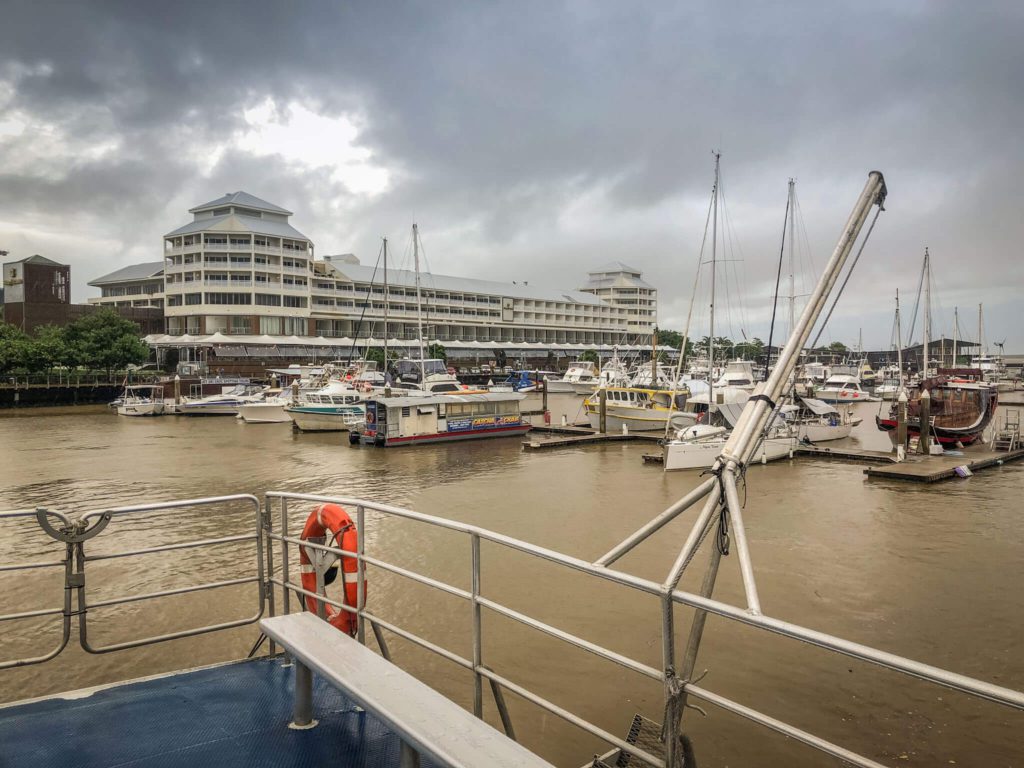
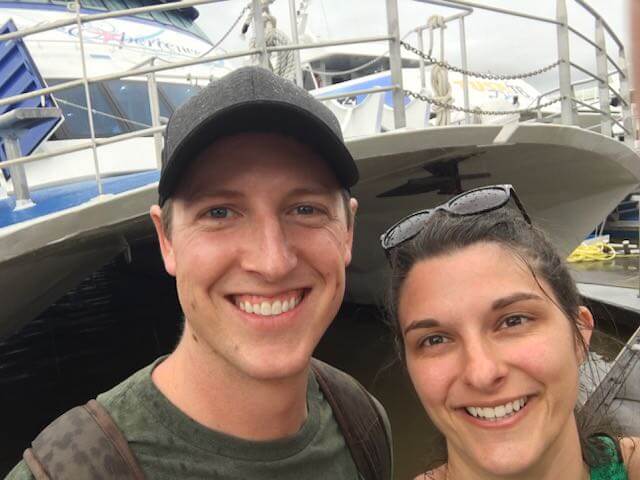
On the morning of our reef trip, we boarded our transfer vessel at the Cairns Marina. After taking Reef Encounters transfer vessel to the liveaboard catamaran, we did a snorkel session and two daylight dives.
For those who haven’t dived before, the weightlessness and the flow of the water makes this an otherworldly experience. Scott and I both later commented that diving the reef was like visiting another planet. And the wildlife was plentiful and amazing. We saw lots of different species of fish and sharks on every dive and the staff on the liveaboard helped us identify them after every dive. Don’t worry about the sharks; they swim away when you get too close.
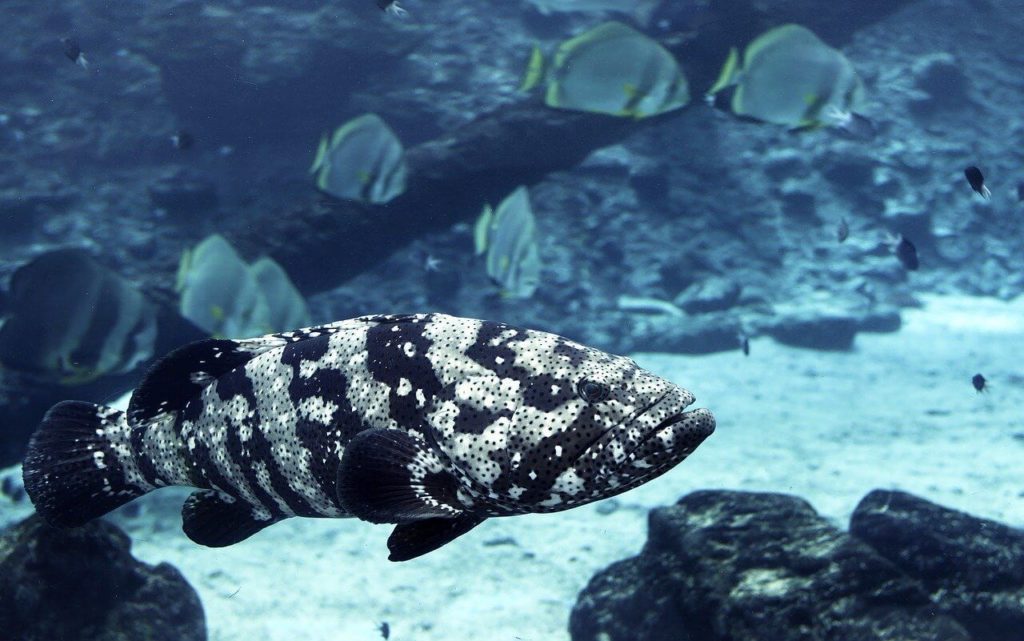
Once the sun went down we prepared for the nerve wracking night dive. This was terrifying, yet I’m so happy we did it. On the night dive we got to experience bioluminescence, lots of sharks, crabs, squid and other wildlife that we didn’t see during the day. Also, the night dive gave us the opportunity of experiencing a terrifying sense of not knowing which direction was up as darkness surrounded us.
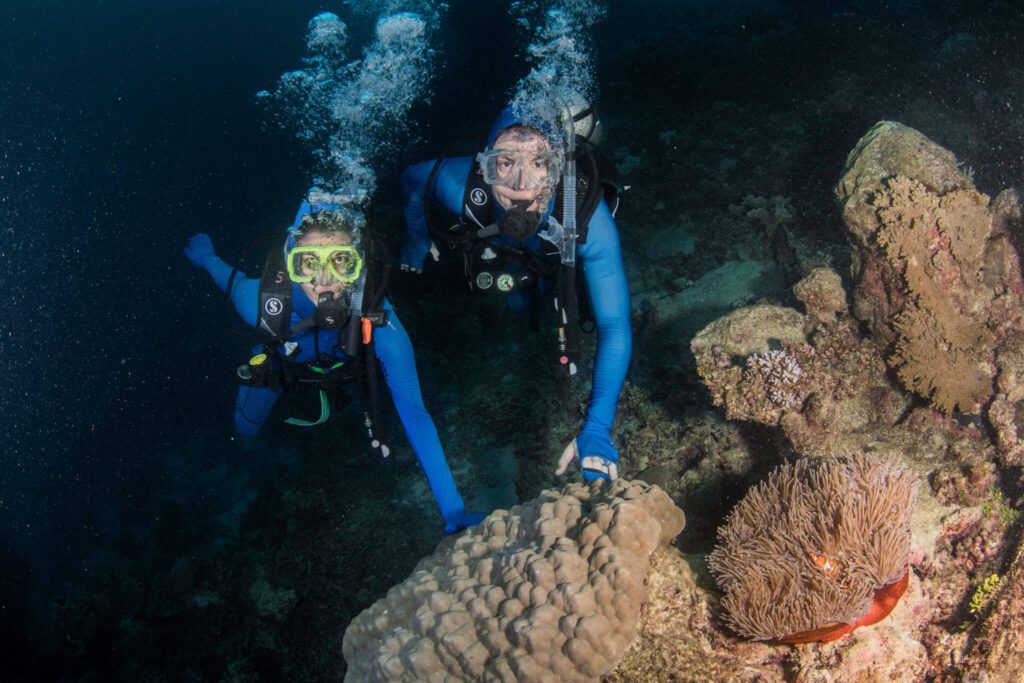
The next morning we got a wakeup call for the sunrise dive. This is when the reef is the most active and this was our favorite dive. We got chased by a trigger fish, a tenacious territorial fish, which we thought was awesome. This was also the time of day that we saw the most “nemo” clown fish.

We dove two more times that day and then headed back to the mainland. If you’re thinking of a dive trip, don’t miss out on the amazing night and sunrise dives that you’ll only experience with a liveaboard.
Logistics of our Great Barrier Reef Diving trip
Before each dive, instructors would show a map of the reef site with some suggested routes for the dive. The boat moved a few times each day giving us the opportunity to see new things. For each dive, the company gave you the paid extra option of going with a guide. We’re less experienced divers so we opted for a guide whenever we were on a reef that didn’t seem as easy to navigate.
After each dive, Reef Encounters checked that you were onboard and noted your tank readings to make sure you weren’t going too deep and in danger. We really appreciated this safety measure as it took the stress of post-dive scuba math away from us.
Additionally, the dive company fed us after every dive, including the three traditional meals a day and snacks. The food was amazing, especially for being prepared on a boat. We ate the best banana bread of our life on board!
Also, the dive company had a professional underwater photographer that would take pictures of you and the wildlife on each dive. These pictures were then available for purchase at the end of the trip and were much better than anything we could taken. You can also bring or rent underwater cameras on your dive as well. We attempted to use a GoPro. However, we didn’t read the manual and ended up thinking the camera was broken and instead took a video of water as the camera dangled from our wrist for the entirety of one of our dives. Whoops!

Cost of Diving the Great Barrier Reef
For two full days of diving, accommodations and food, our trip cost us $1170 AUD. We then paid an extra $300 AUD for professional photos, dive guides and souvenirs. Overall, we thought this was a great value in terms of our daily costs while traveling Australia and the added value of the diving.
For a multi-day liveaboard, you can spend between $200 and $300 AUD each day. Of course many companies offer luxury upgrades that will increase that price. On the other hand, day trips are a little less costly with snorkel trips hovering around $200 AUD and diving costing around $300 AUD per day. You could also stay on one of the many outer islands of the reef at a resort and dive through the resort activities. These resorts vary widely in price from $300 AUD to $600 AUD per night. Some resort prices include food and diving and some don’t. For the value per dollar, I would recommend the liveaboard experiences because of their all-inclusive nature and ease of access to the reef.
For more information on how to plan you trip diving the Great Barrier Reef, see our 4 day Cairns itinerary.
If you have any questions about diving the Great Barrier Reef please leave them in the comments below and we’d be happy to share our experiences with you.
